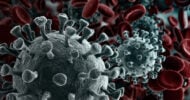The following is a reader take by an anonymous physician.
Pharmaceutical companies could use a little greening. Consider the 5 inch by 5 inch tri-fold wrapper for a 1.5 gram sachet of the latest antibiotic cream, or how about the individually wrapped pills of the latest antihistamine to go over the counter. Does a can of formula need to go into a cardboard box? How about the reprints and other drug propaganda that reps leave in our offices when they pay a visit ““ from plastic lung models to stuffed animals with their latest slogan? What can an office do with expired drug samples?
Hospitals are coming under increasing control of their pharmaceutical and medical waste, but what happens to our individual offices? In 1998 the American Hospital Association and The Environmental Protection Agency agreed to manage and decrease the pollution generated by healthcare facilities. The focus of the agreement mainly refers to hospitals, but the principals can also be applied to nursing homes, physicians’ offices, and retail pharmacies. Hospitals for a Healthy Environment (H2E) was born in 2006 with the goals of “minimization of use and exposure to hazardous chemicals, reduction of the quantity and toxicity of healthcare waste, virtual elimination of mercury, and reducing healthcare’s environmental footprint through resource conservation”. Individual programs in New Mexico (Green Zia) and Texas (Clean Texas, Cleaner World) have successfully reduced waste and saved money. The Green Zia program estimates a $5 million savings from 1999-2007 through implementations of waste reduction practices.
Are there some simple steps that medical offices and physicians can take to decrease our professional, environmental footprints? I believe so. We can start by refusing all drug samples and visits from pharmaceutical reps. This would be a difficult sell in my office, as we have come to rely on samples to assist our financially-strapped parents and patients. A more moderate approach would be to limit samples to the top six to ten drugs, and in my pediatric office, I would include infant formulas, too. Donating samples to local free clinics is another way to recycle drugs instead of dumping prescription drugs down the toilet or drain. Most local wastewater treatment plants are not designed to treat household and office medical waste, and we’re not talking about just anti-neoplastic agents. Medications such as epinephrine, nitroglycerin, Lindane, and warfarin fall under U.S Federal Regulation 40 C.F.R 261.33(e) and 261.33(f) as “acutely hazardous” and “hazardous” when discarded. A 2002 United States Geological Society Study of 139 streams nationwide found 80% contained common household pharmaceuticals such as antidepressants, antibiotics and hormones.
Another easy way to green our offices is to buy commonly used medications in bulk. Our pediatric office does this with acetaminophen, ibuprofen, and methlyprednisolone. Sampling of these drugs has been hit or miss, and stocking them in bulk reliably insures that we can dose patients accurately with an oral syringe. The parents are given the syringe to take home for future doses.
Some of the pharmaceutical reps that visit my office have become good sources of information. They’ve allowed me to network with other physicians such as our local allergist and ENTs. Not ready to kiss these relationships goodbye means that I probably need to have a conversation about future green practices with my reps. For instance, I would like to limit the amount of brochures and fancy interactive detail pieces that inundate my mailbox. Do I really need 300 back to school notes emblazoned with ADHD meds?
Through simple changes in our practices, we can have a large impact on the environmental legacy that we leave our children.
This anonymous physician blogs at Momwithastethoscope.







![Working patients and health care [PODCAST]](https://www.kevinmd.com/wp-content/uploads/Working-patients-and-health-care-190x100.jpg)
![Supporting medical resident families [PODCAST]](https://www.kevinmd.com/wp-content/uploads/Supporting-medical-resident-families-190x100.jpg)




![A tribute to primary care [PODCAST]](https://www.kevinmd.com/wp-content/uploads/A-tribute-to-primary-care-190x100.jpg)
